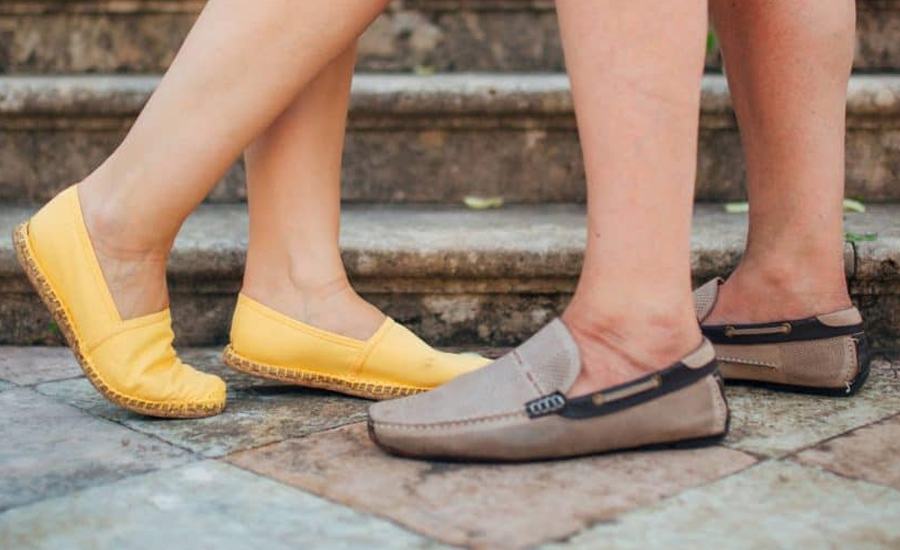When it comes to footwear, men’s and women’s shoe sizes are particular. Comprehending the disparities can be difficult. Different facets impact these differences. They encompass foot anatomy, fashion norms, and recorded shoe-making techniques. This manual will describe how men’s and women’s shoe sizes approximate. This will protect the between sizes and the reasons for these differences.
Guiding the World of Women’s Shoes in Men’s Sizes
In fashion, shoes are generally considered better than accessories. They are a critical part of fashion and amenity. Yet, locating the perfect fit can be challenging. This is especially true when converting women’s shoe sizes to men’s sizes and vice versa. Are you a woman examining to buy men’s shoes for their type and comfort? Or a man interested in women’s designs? Then you need to understand the size transformation.
Understanding the Size Conversion
The broad power to transform women’s shoe sizes into male sizes is to release 1.5 from the women’s size. To convert men’s shoe sizes into ladies’, add a size and a half. For example:
- Check Brand Sizing Charts: Different brands have different sizing standards. Always refer to the specific brand’s sizing chart.
- Consider the style: The style of the shoe can impact the fit. Running shoes have a distinct fit compared to dress shoes of the same size.
- Read reviews. They can tell you how a particular shoe fits.
The key difference between women’s and men’s shoe sizes is in the number system. Women’s shoe sizes exceed men’s by a full size and a half. This is the case for the same foot length. This suggests that a woman’s size 8 shoe would be approximately equal to a man’s size 6.5. Brand and shoe style differences affect the conversion effect.
Finding the Right Fit
Converting shoe sizes is about more than the number. It’s about discovering the right fit. Here are some tips to guarantee you get the excellent pair.
- Try Before You Buy: Whenever possible, try on in-store shoes. This provides the best sign of fitness and comfort.
- Check Brand Sizing Charts: Different brands have different sizing standards. Always refer to the specific brand’s sizing chart.
- Consider the Style: The style of the shoe can affect the fit.
Shoes for running and dressing have distinct fits, despite equal sizing. - Read reviews. They can give valuable insights into how a shoe fits. This is especially true if it runs larger or smaller than expected.
Popular Brands and Their Sizing

Many popular shoe brands offer sizing charts. They help convert between men’s and women’s sizes. Here are a few examples:
- Nike provides a detailed size guide. It includes conversions between men’s and women’s sizes. They also offer unisex styles that follow men’s sizing standards.
- Adidas provides sizing charts. They are like Nike’s. Adidas also offers unisex designs.
- Known for their classic Chuck Taylor sneakers, Converse shoes are often unisex. But you need to check their sizing chart.
Special Considerations
When converting women’s sizes to men’s, consider the following:
- Width Variation: Even after converting sizes. Women with narrower feet may find men’s shoes too wide. In such cases, look for brands that offer narrower widths in men’s styles.
- Unisex Options: Many brands now offer unisex shoes. Shoes follow men’s sizing, requiring women to downsize by one and a half sizes.
- Sock Thickness: The consistency of the tights you plan to model with the shoes can impact the fit. Thicker socks require a size that accommodates their extra bulk.
Conclusion
Navigating the world of shoe sizes is daunting. This is because they differ between men and women. However, with the right knowledge, you can find the perfect fit. You need to understand how to convert sizes. You also need to recognize the differences in design and fit. And, you need to know how to make an informed sale. These are all key steps in this process. You may want comfort, style, or a better fit. Being able to cross traditional shoe size boundaries opens up many footwear options for you.
FAQ
How Do Women’s Shoe Areas Approximate to Men’s?
Women’s shoe sizes are generally approximately 1.5 times larger than males. This signifies that if a lady wears a size 8 in ladies’ shoes, she would likely model a size 6.5 in male shoes. Guidelines differ between shoe labels and classes.
What Are Women’s Sizes in Men’s Shoes?
Women’s shoe sizes habilitate to men’s by lowering one and a half.
- A lady size seven shoe would be a gentleman’s size five and a half.
- A lady size 8 shoe would be a gentleman’s size six and a half.
- A woman’s size nine shoe would be a male size seven and a half.
What size is a woman in a male’s shoes?
For a fast transformation, remove 1.5 from the female size to get an equivalent male size. For example, a woman size 8 would change to a male size 6.5.
What size is a male in women’s shoes?
To restore men’s shoe sizes to women’s, you count 1.5 sizes. For example:
- A male size eight shoe would be a female size nine and a half.
- A male size nine shoe would be a female size ten and a half.
- A male size 10 shoe would be a lady size eleven and a half.
What size is the medium in male footwear?
In men’s footwear, the middle is commonly called “D” or “M.” It is the desired width for men’s shoes and suits the internal foot.
Why Do Women’s Shoe Sizes Differ from Men’s?
Several elements can account for the differences in shoe sizes between men and women.
- Foot Anatomy: Women generally have narrower paws than men. This affects the width and shape of the shoes, requiring different sizing.
- Fashion Standards: Women’s shoes follow further technique movements. These trends impact their sizing and fit.
- Shoe manufacturing has created different sizing systems for men and women. I have accomplished so over time.
Why Are Women’s Shoes Sizes Larger Than Men’s?
When we say women’s shoe sizes are “bigger,” we mean the number is around 1.5 times larger than men’s. This is not because women’s feet are bigger. Measuring and tagging shoe sizes is the topic.
Will a woman’s shoe fit a man?
Accurate size conversion enables a man to fit into a woman’s shoe. However, women’s shoes are mostly narrower. So, men with wide feet may find them less comfortable.
Why Choose Men’s Shoes?
Choosing men’s shoes over women’s might be beneficial for several reasons:
- Men’s shoes are often more durable. This makes them suitable for activities that need strong footwear.
- The wider fit and different arch support in men’s shoes can offer more comfort. They can offer more comfort to some wearers.
- Some women may find more styles and sizes in men’s shoes. This is particularly true for categories such as muscular shoes and boots.
Are women’s shoe sizes the same as men’s?
No, women’s shoe sizes are not the same as men’s. Women’s sizes are especially 1.5 times bigger than male sizes for the exact size of the foot.
Are genderless shoes available in male sizes?
Unisex shoes are usually sized and established on the men’s sizing graph. Women purchasing genderless shoes need to transform their size to the men’s match.
Are women’s shoes calculated in inches?
Both men’s and women’s shoes are typically measured in inches. However, the brands and size transformations are different. The size number approximates to a different size in men’s and women’s shoes.
Conclusion
You must understand the unlikeness between men’s and women’s shoe sizes. It is critical to find an excellent fit. You may be shopping for yourself or a person else. Learning how to correct sizes and why they are discussed will make the method smoother. Forever try on shoes when feasible. Different brands and styles can vary in fit, even in the same size.

As a versatile and creative content writer, I craft compelling narratives that captivate and engage readers. With a keen eye for detail and a passion for storytelling, I transform ideas into impactful content. Clients choose me for my ability to understand their vision, deliver high-quality work on time, and provide a unique voice that resonates with their audience.

